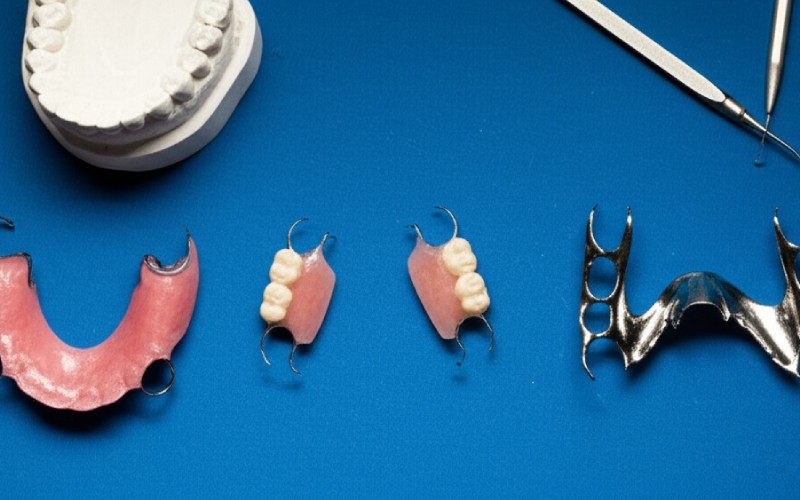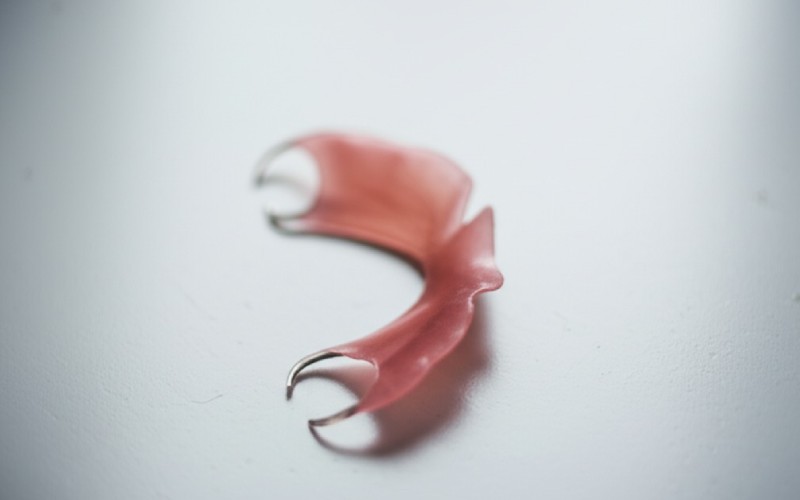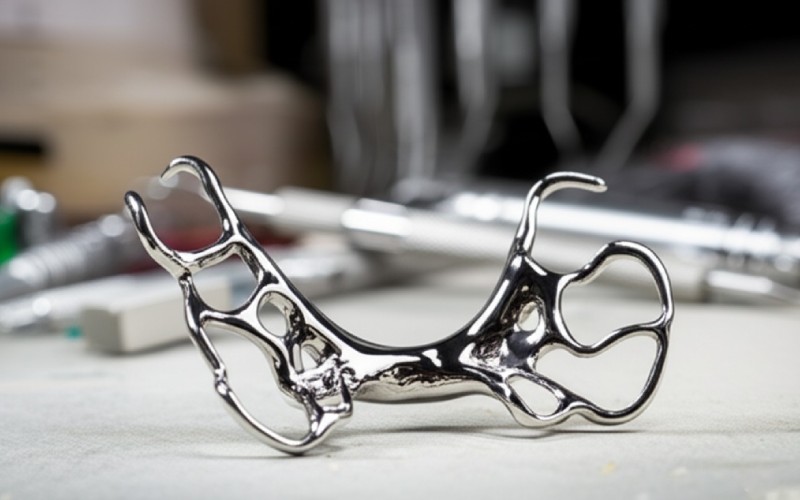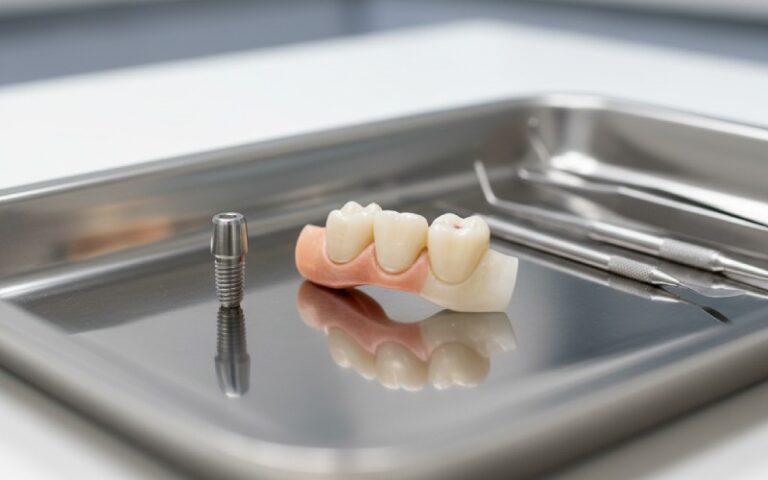
Hvornår skal man vælge en Valplast-partielprotese frem for en metal- eller akrylprotese?
There are many kinds of partial dentures. It can be confusing for everyone. You have the old-school metal and acrylic types, and then you have this flexible option called Valplast. This article is a guide to help you understand the differences. I will break down each type of partial denture in simple terms. By the end, you will know the pros and cons of each. You will be able to choose the best option for a patient’s needs, whether it’s for looks, comfort, or long-term use.
Indholdsfortegnelse
What is a Valplast Partial Denture, Anyway?
A valplast partial is a type of removable partial denture made from a special, flexible thermoplastic nylon resin. The biggest thing you’ll notice is what’s missing: metal. There are no shiny metal clasps that you see on other partial dentures. This makes it a great choice for patients who are worried about the look of their smile.
The material itself is a key part of the denture. The pink resin base is thin and flexible, which allows it to blend in with the natural color of the patient’s gums. The clasps that hold the denture in place are also made from this same pink resin. They are basically little arms that hug the patient’s natural teeth near the gum line. This makes the valplast partial dentures almost disappear in the mouth, giving a very natural and aesthetic look. The whole appliance is lightweight and designed for patient comfort.
How Does a Traditional Acrylic Partial Denture Compare?
Now, let’s talk about the standard acrylic partial. This is a very common type of denture. It has a thick, rigid pink acrylic base that holds the replacement tooth or teeth. To stay in place, it usually relies on metal wire clasps. These are the little wires you often see hooked onto existing teeth. The acrylic partial dentures have been around for a long time and are a reliable option for many people.
The main difference when you compare valplast and acrylic dentures is the feel and look. The acrylic partial is much more rigid. It doesn’t bend. While it’s strong, some patients find the thickness of the acrylic base to be bulky. The metal clasps are also a big concern for many. They can be seen when a person smiles or talks, which can make them feel self-conscious. On the plus side, acrylic partial dentures are often cheaper and much easier to repair or adjust. A Dentallaboratorium or even a dentist can add another tooth to an acrylic partial if the patient loses another one later on.

What About the Strong Metal Framework Partial? Chrome vs. Valplast
For the ultimate in strength, we have the metal partial. These are the workhorses of the dental world. They have a thin but super strong cast metal partial framework. This framework is usually made from a chrome cobalt alloy. For patients with metal allergies, a titanium framework is a great alternative. The titanium is also very lightweight. On top of this metal framework, the lab adds pink acrylic and the denture teeth. This type of denture gets most of its support from the patient’s existing teeth, not the gums.
When you put a chrome or titanium metal partial up vs valplast, the biggest difference is strength and support. The metal framework is incredibly durable and less likely to fracture. Because it rests on the teeth, it puts less pressure on the gums. However, the trade-off is aesthetics. These partial dentures almost always have visible metal clasps. While the framework itself is thin, the clasp arms are made of shiny chrome or titanium metal. For a back tooth, this may not matter, but for teeth that show when you smile, it’s a big deal.
Are Valplast Dentures Really More Flexible and Comfortable?
Yes, they really are. This is the main advantage of a valplast partial denture. The flexible nature of the nylon resin is a game-changer for comfort. Think about trying to snap a rigid piece of plastic into your mouth versus a flexible one. The valplast partial can bend slightly as you put it in, making it easier to insert and remove. This flexibility helps the denture adapt closely to the shape of your mouth and gums.
Because the appliance is so flexible, it hugs the gums and teeth securely. This provides good retention without the need for a rigid framework or uncomfortable metal clasps. Many patients report that valplast dentures feel more natural and less bulky than other types of partial dentures. The material is also very lightweight, which adds to the overall comfort. You get a secure fit from the flexible design, not from brute force like with a hard acrylic or metal partial.

Which Denture Offers Better Aesthetics? Looking at the Pros and Cons
When it comes to looks, the valplast partial is the clear winner for most situations. The goal of any good restoration is to look natural, and valplast partials do this very well. There is no visible metal at all. The clasps are made from a pink, gum-colored resin that blends into the background. For a missing front tooth or any anterior teeth that show when you smile, this is a huge benefit. The seamless appearance is what makes so many people choose this type of denture.
Of course, there are pros and cons. While a valplast partial looks great, a metal partial made with titanium or chrome can sometimes be designed with clasps that are less visible. A good dental lab can be creative. An acetal resin partial is another option that offers great aesthetics, with clasps that can be made in a tooth color. So while valplast partial dentures are often the most aesthetic choice, it’s worth discussing all options with your dental professional to get the best result for your smile.
What are the Main Limitations of a Valplast Partial?
No dental product is perfect, and a valplast denture has its own limitation. One of the biggest issues is that they are almost entirely tissue-supported. This means the denture rests on the gums. Over time, this can cause the bone underneath the gums (the ridge) to shrink a bit faster than with a tooth-supported metal partial. This is a very important point to consider for long-term use.
Another major limitation is the difficulty of making changes. It is very hard to reline a valplast partial. A reline is needed when the gums shrink and the denture becomes loose. With acrylic dentures, a reline is a simple process. With a valplast partial, it often means you need a whole new appliance. Adding a new tooth is also very difficult. If a patient might lose more teeth in the future, a valplast partial denture may not be the best long-term choice because it’s not easy to modify.
Can You Repair or Reline a Valplast Partial Denture?
The short answer is: it’s very difficult. The nylon-based resin used for a valplast partial does not bond well with other materials. This makes a simple repair a big challenge. If a clasp or a piece of the pink base breaks, you can’t just add new resin to it like a metal or acrylic denture. The entire denture usually has to be sent back to a specialized lab for a complex repair, which can be costly.
As for relining, it’s a similar story. You cannot do a standard chairside reline on a valplast partial like you can with an acrylic one. The materials just won’t stick together. Some labs offer a service where they can re-process the denture with a new layer of flexible material, but this is not always successful. Because of these challenges with repair and adjustment, it’s critical that the initial impression is perfect to ensure a good fit from the start.
How Does a Dental Lab Make a Valplast Restoration?
The process for making a valplast partial is quite different from making other partial dentures. It all starts with a very precise impression from the dentist. There is very little room for error. Unlike an acrylic or metal partial, there is usually no wax try-in stage where the patient can see how the denture will look and feel before it’s finished. This is because the flexible material behaves differently from wax.
Once the dental lab receives the impression, they create a stone model. Then, they use a special injection molding system. The valplast resin pellets are heated to a high temperature until they become molten. This hot resin is then injected under high pressure into a mold of the patient’s mouth. After it cools, the lab technicians carefully cut, shape, and polish the valplast partial denture. The finished restoration is then checked for quality before shipping it back to the dental office. This whole process requires special equipment that not every dental laboratory has.
Valplast vs. Acrylic vs. Metal: How Do You Choose the Best Partial?
So, how do you make the final choice? Here’s how I break it down. You choose a valplast partial when aesthetics are the number one priority. It’s perfect for a missing front tooth or for patients who absolutely do not want any visible metal clasps. It’s also great as a temporary or transitional removable partial, such as for an immediate partial case right after a tooth is pulled. The comfort and flexibility are big selling points.
You choose a metal partial (with a chrome or titanium framework) when you need the strongest, most durable, long-term solution. It’s the best choice for replacing many teeth or for a lower ridge that needs maximum support. You choose an acrylic partial denture when budget is the main concern and when future modifications, like adding a tooth or doing a reline, are likely. It’s about weighing the pros and cons of comfort, looks, durability, and cost to choose the best restoration for the patient.
Is an Acetal Resin Partial a Good Alternative to Consider?
Yes, there is another great option in the world of dentistry called an acetal resin partial. Think of it as a hybrid. It is made from a thermoplastic resin that is more rigid than a valplast partial but still more flexible than acrylic. The best part about an acetal resin partial is the clasp. The clasps can be made in different shades, including tooth-colored shades. This means the clasp can blend in with the tooth it’s holding onto, rather than the gums.
This gives you excellent aesthetics without sacrificing as much stability as a valplast denture. An acetal resin partial is a good middle-ground choice. It provides a more secure fit than a valplast partial because it’s more rigid, but it still avoids the look of metal clasps. It is another fantastic tool offered by the dental industry, and a high-quality partial from stomadent can be a great example of this technology. It’s a strong contender for patients who want a balance of looks, comfort, and function.
Vigtige ting at huske:
- Choose Valplast for Aesthetics: When hiding the denture is the top priority, especially for front teeth, the flexible, metal-free valplast partial is the best choice.
- Choose Metal for Strength: For the most durable, long-lasting restoration that gets support from teeth, a chrome or titanium metal partial is the gold standard.
- Choose Acrylic for Budget and Repairs: When cost is low and you might need to add a tooth or reline the denture later, a traditional acrylic partial is the most practical option.
- Comfort vs. Stability: Valplast dentures are very comfortable and flexible, but are supported by the gums. Metal partial dentures are more rigid but get better support from the teeth.
- Repairs are a Big Factor: It is very difficult and costly to repair, reline, or add a tooth to a valplast partial. Acrylic and metal framework partials are much easier to adjust.
- Consider All Options: Don’t forget about alternatives like an acetal resin partial, which can offer tooth-colored clasps for a great mix of strength and looks.




